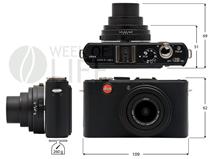It is no coincidence that the historically first camera review on Week of Life introduces Leica D-Lux 4. Author of this project, Adolf Zika, himself captured his One Year of My Life using this camera. The majority of compact digital cameras represent simple automatic devices for a common user, one who requires a nice design, simple handling, and of course, good images. But even among pocket devices one can find models that could be labeled professional. The Leica D-Lux 4 belongs at the top of such models.
The austere shape of the metal coated black body of the Leica D-Lux 4 with the essential red round logo suggests at first glance that this is not just an ordinary camera. Experienced photographers also notice the hot shoe for external flash on top, which is another unmistakable sign of a state-of-the-art camera.
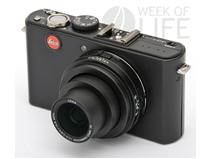 |
 |
The Leica D-Lux 4 is truly a professional compact camera in all aspects. The optics—from the same brand of course—has a not-that-wide range of 24–60 mm, the shooting angles are set from a wide aperture to normal, however the lens speed of F2,0–2,8 is fantastic. Moreover, the lens is equipped with optical stabilization, so you can photograph even in very unfavorable light conditions.
| Leica D-Lux 4 – in short | |
| Resolution | 10 Mpx |
| Optics | 24–60 mm, stabilization |
| Video | HD (1 280 × 720 px) |
The D-Lux 4 is a camera equipped with all exposure regimes P/A/S/M plus common motive programs or full automatics. So even an absolute beginner will be able to handle the device. Besides the standard JPEG it is possible to store image data also in RAW, which enables more accurate and extensive computer modifications, which is a feature for more experienced photographers.
Regarding dimensions and weight, the Leica D-Lux 4 does not deviate from the digital compacts class in any way. The construction leans slightly more towards design rather than ergonomics—the smooth body lacks distinct support for a firmer grip. However, Leica sells a small grip for the right side of the camera as an optional accessory.
 |
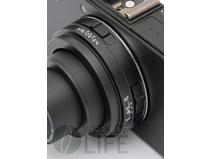 |
The built-in flash is constructed as retractable and is operated by a small button on the top side of the device. You can also purchase an external flash Leica CF 22 with a higher output. The manufacturer used the surface along the perimeter of the lens ring interestingly—two sliding controllers are placed at this point. With the scroll bar on the left side you can quickly change the focus mode, using the top control you can easily change the image aspect ratio to one of the three options: 4:3, 3:2 or 16:9.
| Super features |
| Fast optics |
| Top image quality |
| Compact dimensions |
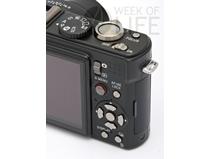 |
 |
 |
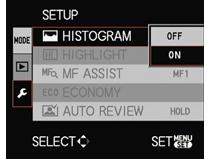 |
 |
You can find more controls on the right of the back side of the Leica D-Lux 4. Apart from the standard buttons and a four-way select switch, an inconspicuous Q.MENU joystick is also located here, which can be used to enter and operate the so-called quick menu, which contains the most commonly used image parameters.
As a state-of-the-art camera, D-Lux 4 enables the display of a histogram. This device is supported in two regimes—realistic for image composition or preview for viewing already taken photographs. This regime also allows the display of an indication of overexposed parts of images.
 |
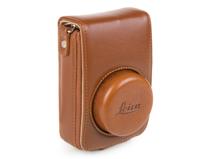 |
| Photo Leica | |
Photographers, who have not gotten used to the method of composing images using the LCD display—despite having an excellent resolution of 460 000 image points and thus providing an outstanding image—can opt for an optional accessory, which is offered by Leica, an external optical viewfinder, which is placed in the hot shoe. But you must take into account that the viewfinder is monofocal—displaying the image from only one perspective, the widest 24mm aperture of the camera.
Other accessories which can be purchased, include, for instance, a luxury leather bag in retro style.
Overall evaluation
The Leica D-Lux 4 is a top-of-the-line digital compact, which provides high quality images. You will get the maximum out of this camera if you use the RAW format and convert images using the standard supplied software Capture One (which is a quality ? in itself). However, thanks to well functioning automatic modes, this camera will definitely not be lost in the hands of a beginner either.
A small inconvenience is the price of the camera. For seven hundred USD you can purchase an amateur digital reflex camera, so it can be assumed that the Leica D-Lux 4 will be purchased primarily by true connoisseurs and fans of this legendary brand. It must also be noted that Leica manufactures this model in co-operation with Panasonic. If you purchase the almost identical model Panasonic Lumix DMC-LX3, you will save nearly a third of the price.
Common price (at the time of the review being published): $699
Basic technical data
Sensor
CCD 1/1,63″
10 Mpx (3 648 × 2 736 px)
Sensitivity ISO 80 to 3 200
Optics
24–60 mm F2–2.8
Optical stabilization
Memory medium
SD, SDHC, MMC, Built-in memory 50 MB
Data formats
Image: JPEG
Video: MOV
Video
1,280 × 720 px, 24 fps
848 × 480 px, 30 fps
640 × 480 px, 30 fps
320 × 240 px, 30 fps, 10 fps
Mono sound
LCD
Screen size 3” (76 mm)
460,000 px
Power supply
Li-Ion battery
Dimensions and weight
109 × 62 × 51 mm (w × h × d)
260 g (incl. battery and memory card)
 |
 |
 |
 |
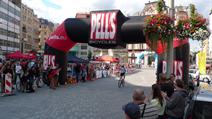 |
 |
 |
 |
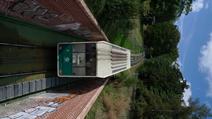 |
 |
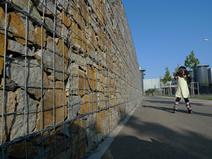 |
 |
 |
 |
 |

